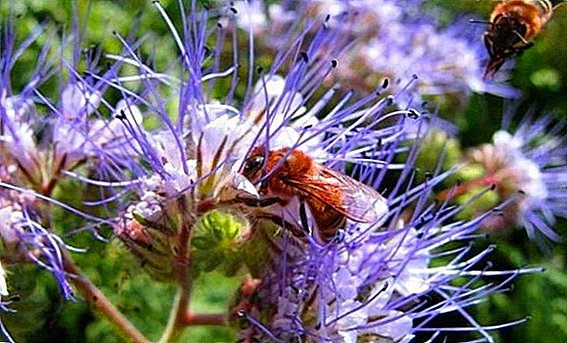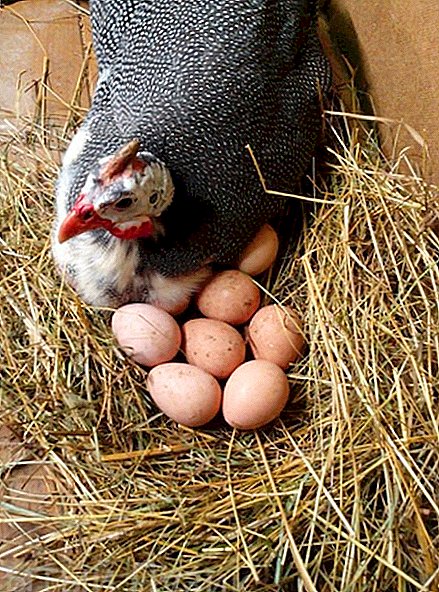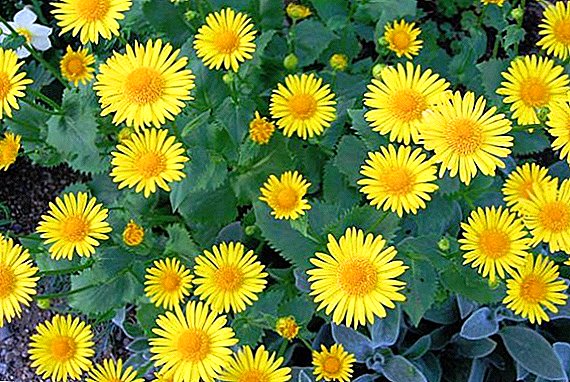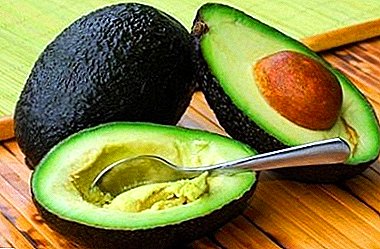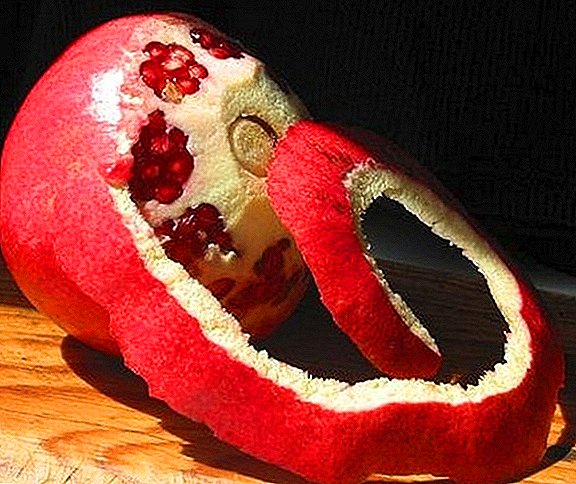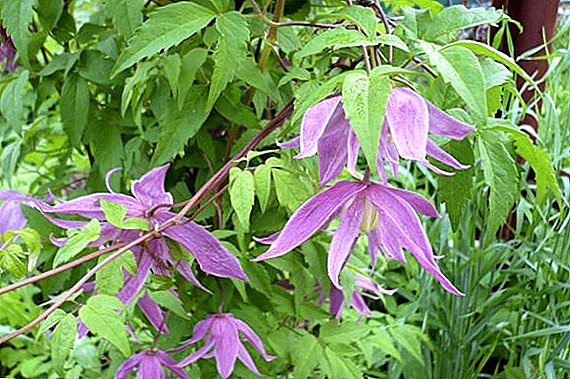 In the suburban areas are often found places that need to be decorated with lash-plant. If you are just in search of such a flower, we advise you to take a closer look at the prince. It does not require special care, beautiful blooms, blooms before other plants. After reading about his planting and care, you can decide whether the prince is suitable for you and whether you have the necessary conditions for its cultivation.
In the suburban areas are often found places that need to be decorated with lash-plant. If you are just in search of such a flower, we advise you to take a closer look at the prince. It does not require special care, beautiful blooms, blooms before other plants. After reading about his planting and care, you can decide whether the prince is suitable for you and whether you have the necessary conditions for its cultivation.
Botanical description
Knyazhik (lat. Atragene) - perennial, ranked among the family of buttercups (lat. Ranunculaceae). Previously, it was called wild and boron hops, wyunts and branch wines. Quite often confused with clematis due to the strong similarity in appearance. Some botanists even attribute the prince to the Klematis family. And on sale European samples are often presented under the name "Clematis".
It advises to know what are the varieties of clematis and how to plant and grow shrubs.
Knyazhik grows in the form of creepers, the stem of which can reach three meters. The leaves of the plant are opposite, growing on elongated petioles, which twist and cling to the support. Flowers solitary, large - up to 10 cm in diameter, in the form of bells. They go down. Have a double perianth. The cup consists of four to eight petal sepals. By color, the flowers are different: purple, white, blue, pink, two-colored.  Like most plants of the genus Ranunculaceae, the prince is poisonous or slightly toxic. Its organs are used in folk medicine for medicinal purposes. He found wide application in landscape design.
Like most plants of the genus Ranunculaceae, the prince is poisonous or slightly toxic. Its organs are used in folk medicine for medicinal purposes. He found wide application in landscape design.
Did you know? The ancestor of the family of buttercups is buttercup - a root-tuberous plant with yellow flowers. It was from the poison of this flower that the pharmacist Lorenzo made a sleeping pill for the main character of the Shakespearean tragedy Romeo and Juliet.
Varieties
In the genus princes includes eight species. In our latitudes, the most common are four: Alpine, Okhotsk, Siberian, krupnolepechest.
Alpine
Alpine knight (lat. Atragene alpina L.) distributed on rocks and river banks in temperate regions of Eurasia. Its stem grows to two meters. The vegetation period lasts from May to October. It is characterized by rapid growth.
Their leaves are trifoliate, pointed, with teeth along the edges, ovate. Kept on elongated petioles. The length of the leaves is 2-5 cm. Their lower plate is pubescent.  Flowers liana produces from May to June. Blooms purple and blue. There are varieties with pink and white blooms. They are held on long stalks. Have four sepals. Their outer part is pubescent.
Flowers liana produces from May to June. Blooms purple and blue. There are varieties with pink and white blooms. They are held on long stalks. Have four sepals. Their outer part is pubescent.
Knyazhik Alpine is considered to be slightly poisonous plants. In the Czech Republic and Slovakia is protected by law.
It grows well in sunny areas that are well protected from drafts. For growing requires support. The most beautiful varietal species are "Pink Flamingo", "Willy", "Francis Rivis".
Okhotsk
In wild nature Prince of Okhotsk (Atragene ochotensis) can be seen in China, Korea, Japan, Eastern Siberia, in the Far East. It lives in forests, on rocky sites, can grow up to 1100 m above sea level.
The leaves of this creeper are trifoliate, ovate, two-three-lobed or separate.
The flowers are kept on elongated peduncles. They have from four to eight sepals, painted in purple or blue tones. Flowering begins in June.
Check out the list of plants that can be planted in the garden in June.
 The plant has medicinal properties, in particular, in folk medicine based on it they make a heart remedy. He is loved for excellent decorative qualities. Often planted in parks, in light shade, in fairly fertile and moist soil.
The plant has medicinal properties, in particular, in folk medicine based on it they make a heart remedy. He is loved for excellent decorative qualities. Often planted in parks, in light shade, in fairly fertile and moist soil.
Did you know? Scientists at the University of Cambridge, through research, have found that the buttercup flower reflects in a special way the light that attracts insects. Ultraviolet waves are not visible to humans, and for insect pollinators are a guide when looking for nectar.
Siberian
Habitats Siberian princes (Atragene sibirica L.) or beautiful - forests, river banks, stony slopes, rocks of Siberia, Pamir, Tien Shan, Eastern Urals, Karelia.
The stem winds in height to three meters. The top plate of their leaves is dark green, the bottom is pale green.
It blooms with large flowers of white or slightly yellow in the form of drooping bells with four petals. Flowering occurs in the summer. May also occur again in the fall.  This species is interesting in that even after ottsvetaniya retains decorativeness - it forms interesting in appearance fruits in the form of broadleaf seeds.
This species is interesting in that even after ottsvetaniya retains decorativeness - it forms interesting in appearance fruits in the form of broadleaf seeds.
Large-blind
Large Prince (Latin. Atragene macropetala) can be found in coniferous and deciduous forests in Eastern Siberia, the Far East, China, and Korea. It is cultivated infrequently. Mostly placed in botanical gardens.
Liana grows up to three meters. Leaves her keep on elongated petioles. They are duplicated, ovate, 2-3 cm long.
Flowering begins in May. Lasts for a month. Flowers are large - up to 9 cm in diameter. They have four sepal pubescent with two sides. Painted in blue.
This plant can survive in extreme cold - even up to -30 degrees.  The liana contains substances that, when exposed to human skin, irritate them.
The liana contains substances that, when exposed to human skin, irritate them.
Knyazhik krupnolepestny became the basis for the breeding of 28 varieties, the most interesting of which are Estrella, Memme, Jean Lindmark, White Swan.
By the way, since the described types of prince bloom at different times: Alpine - in May, Okhotsk - in June, Siberian - in July and again in September, their joint use in landscape design can create a rather interesting and beautiful composition.
Medicinal properties
The people of the prince known for a long time thanks to the substances contained in his organs, which have a therapeutic effect on the human body. It contains vitamin C, glycosides, alkaloids, saponins, flavonoids, polysaccharides, aluminum, cobalt, iron, silicon, manganese, sodium, nickel.
According to folk healers, the organs of the prince have the following healing properties:
- tonic;
- immunomodulating;
- antirheumatic;
- anti-inflammatory;
- wound healing;
- antibacterial;
- antitumor.

Contraindications to the use
Since the prince is a poisonous plant, the use of therapeutic agents based on it is possible only after the recommendation of a doctor. They are strictly forbidden to take during pregnancy. Patients who are being treated for heart disease, folk remedies based on the prince should be prescribed only by a doctor. Self-medication can lead to deterioration.
In order to avoid poisoning, you should follow the recommended dosages in the recipes of folk remedies.
Did you know? For a person, Buttercups do not pose a serious danger - there can only be mild poisoning when taking a large amount of them or irritation on the skin when in contact with plants. But animals with the use of some representatives of these plants can die 30-50 minutes after the first manifestations of poisoning.
Use in traditional medicine
Flowers, stems and seeds of the prince are used to treat:
- inflammation of the gastric mucosa;
- seasonal viral infections;
- edema and dropsy;
- ulcers and abscesses on the skin;
- headaches;
- scabies;
- inflammatory processes in the liver;
- metabolic disorders;
- rheumatic pains.
Like a prince, a wolveshackle, dodder, a hogweed, a yew berry, an autumn crocus are poisonous plants, but with proper treatment they can cure many diseases.
Broths, infusions and tinctures are made from the leaves. They are used both internally and externally. The broth is boiled on low heat from a small spoonful of crushed raw materials and 200 ml of boiled water for half an hour. Before use, filter and cool. Adding warm boiled water, bring to the original volume of liquid. Drink remedy for a large spoon three times a day after meals.  The infusion is prepared from a teaspoon of dried, crushed leaves, which are poured with a glass of boiling water and infused for half an hour. Then filter and drink two large spoons three times a day in the process of eating.
The infusion is prepared from a teaspoon of dried, crushed leaves, which are poured with a glass of boiling water and infused for half an hour. Then filter and drink two large spoons three times a day in the process of eating.
To prepare the tincture, dry leaves are crushed and placed in a dark bottle so that they fill it one third. Then the tank is poured to the top with vodka. Place in a dark place for two weeks. Filter before use. Take 30-40 drops, diluted in water, three times a day for a month.
Important! We provide prescriptions for medicines based on the prince only for informational purposes. It is forbidden to prescribe them yourself - the plant contains toxic substances for humans that can cause poisoning. The doctor should prescribe the dosage and frequency of taking the funds.
Use in landscape design
For decorating suburban areas, parks, princes are planted with hedges, used in combined plantings, for decorating vertical surfaces, as a ground-covering plant. They are planted alone and in group plantings, against the backdrop of trees and shrubs.  Creepers are suitable for creating places that protect from the sun and create shade. The advantage of princes is that, due to their compact size, they can be planted wherever a tree or a bush cannot be placed.
Creepers are suitable for creating places that protect from the sun and create shade. The advantage of princes is that, due to their compact size, they can be planted wherever a tree or a bush cannot be placed.
Those who wish to decorate their gazebo or terrace in the country, we advise you to get climbing perennials: actinidia, wisteria, girlish grapes, honeysuckle, climbing rose.
Growing at home
Cultivation of the prince does not require significant efforts, however, it will delight with its decorative effect if certain conditions are met.
Location and lighting
Knyazhiki love the light, but not the heat and sunshine. For their landing it is necessary to select a bright place, but not one that the sun's rays fall all day. The sun will cause the grinding of leaves and flowers. The most optimal site will be in the penumbra. It must be protected from the winds, otherwise they will pick flowers and damage the leaves.
If you plan to plant it near a vertical surface, it is necessary to do it from the east, southeast, south and southwest side. 
Soil and fertilizer
The plant does not impose special requirements on the soil; it can grow in any soil. The only thing that does not tolerate - marshy and too wet soil. The best option for planting is loamy, fertile, light, loose soil, which perfectly passes moisture and air and has good drainage, has a weak or neutral acidity.
Before planting the vine, the soil must be fed. To do this, 5-8 kg of humus, rotted manure or compost, 50 g of superphosphate (in granules), two or three glasses of wood ash are brought in advance into the pit in which the prince is going to be planted.
To reduce the acidity of the soil, you need to mix 50-100 g of hydrated lime into it.
Landing
Knyazhiki usually plant in the spring. In the middle lane landing is better to carry out in May. Although it is possible and autumn planting - at the end of summer - early autumn.
Pre-prepare the planting hole with dimensions 60x60x60 cm, fertilize the soil and lay drainage from a 10-15-centimeter layer of vermiculite, broken brick or gravel. During spring planting, fertilizers are applied in the fall, while in the autumn - a month before planting the seedling in open ground.  If you plan to plant near the building, it is necessary to maintain a distance of at least 30 cm between it and the plant.
If you plan to plant near the building, it is necessary to maintain a distance of at least 30 cm between it and the plant.
When planting a hedge the distance between the seedlings should be 1.5 m.
An excellent option for creating a hedge would be turn, boxwood, hawthorn, forsythia, privet, Thunberg barberry.
For planting select two-year strong seedlings. All shoots that are above the first and second pair of buds are removed.
At the bottom of the pit form a hill and distribute the root system through it. Then it is covered with soil. The root neck after planting should be 5-10 cm underground in young plants and 12-15 cm in adults. The liana is watered, and the ground in the near-volga area is mulched with peat, straw or sawdust.
After planting, the stems are straightened and attached to a support. Reiki supports should be as thick as a pencil.
Important! To protect the liana from fungal diseases, a bucket of river sand, connected to 250 g of wood ash and crushed coal, is poured onto the root neck of the plant when the plant is placed in the planting pit, and a solution of 25% potassium permanganate is poured.

Care and watering
Up to three years, until the vine starts to bloom, the main care will be:
- regular watering;
- loosening the soil;
- dressings.
Fertilize liana need twice a month. The first dressing is produced in the phase of the appearance of buds, the following - after dropping flowers and pruning.
Knyazhik feed organic and mineral fertilizers. It is good to add urea from organic matter (10 g per 10 l of water), mullein (1:10), bird droppings (1:15). From mineral fertilizers - nitroammofosku (10 g per 10 l of water), full fertilizer (10-20 g per 10 l).  In the first year of life when forming buds on the vine, they will need to be cut off.
In the first year of life when forming buds on the vine, they will need to be cut off.
Diseases and pests
In general, the prince is rarely affected by diseases and parasites. However, unfortunately, this happens. Powdery mildew, rust, brown spot can spread on the vine. From parasites it is damaged by snails, slugs, nematodes, worms, rodents.
Mealy dew appears as white bloom on the leaves. As further infection occurs, the leaves dry out and the plant dies. To protect the vine from this serious disease, it is necessary to carry out spring preventive spraying and thorough cleaning of old foliage in the fall. Sick shoots are cut and destroyed by burning.
That your prince is amazed rust, bloated brown spots on the plant’s ground organs will indicate. Prevention of infection with this disease is preventive chemical spraying.  Brown spot It appears rusty spots on the leaves with black dots on their surface. The disease is quite serious, because it can quickly lead to the death of creepers. To prevent it, spraying Bordeaux liquid, copper sulphate or the drug "Topsin-M" will be required. The same means are used for treatment. The diseased plant needs to be cut and burned, and the ground around it should be shed with "Fundazole" or potassium permanganate.
Brown spot It appears rusty spots on the leaves with black dots on their surface. The disease is quite serious, because it can quickly lead to the death of creepers. To prevent it, spraying Bordeaux liquid, copper sulphate or the drug "Topsin-M" will be required. The same means are used for treatment. The diseased plant needs to be cut and burned, and the ground around it should be shed with "Fundazole" or potassium permanganate.
Learn how to properly use the drugs "Fundazol", "Karbofos", "Topsin-M" to protect plants from diseases and pests.
To the plant passed the attack gall nematodesOne month before planting, the soil should be treated with Nematogon or Carbotione. To combat slugs and snails, they resort to their mechanical collection and treatment with Metaldehyde. From mealybugs help spraying "karbofos". To prevent rodents from nibbling plants, it is covered with spruce branches in winter.
Breeding
The prince reproduces in four ways:
- cuttings;
- layering;
- division of the bush;
- seed.
Cuttings  Cuttings cut out in late June - early July. It must be strong shoots, which have one or two nodes. Rooted them in hotbeds in expanded clay. Expanded clay is poured into a pot with a layer of 10-15 cm, sprinkled on top with an 8-cm layer of river sand. The cuttings are planted at intervals of 10-15 cm from each other, covered with foil and create a temperature of + 20 ... +25 ° C for them. Growth treatment is desirable before planting. Roots should be expected after 20-30 days. After the roots appear, the cuttings should be transplanted into containers and kept for another season with regular watering.
Cuttings cut out in late June - early July. It must be strong shoots, which have one or two nodes. Rooted them in hotbeds in expanded clay. Expanded clay is poured into a pot with a layer of 10-15 cm, sprinkled on top with an 8-cm layer of river sand. The cuttings are planted at intervals of 10-15 cm from each other, covered with foil and create a temperature of + 20 ... +25 ° C for them. Growth treatment is desirable before planting. Roots should be expected after 20-30 days. After the roots appear, the cuttings should be transplanted into containers and kept for another season with regular watering.
Seeds
Seeds need to be stranded. The easiest way is to mix them with sand and put them in the cold or put them in the fridge.
For sowing seeds prepare the substrate of the earth and sand in a ratio of 2: 1. Seeds are placed in the ground and sprayed with a spray bottle. Cover with glass and put in a room with a warm temperature. In May, the seeds are planted in the beds of two parts of turf land, one part of humus, one part of leafy land, 0.5 parts of sand, 0.5 parts of peat. Seedlings are placed at intervals of 3-4 cm from each other in the phase of the first three or four leaves. The distance between the rows should be 25-30 cm.  Sprouts are transferred to the place of constant growth next autumn or in the spring period, after they overwinter.
Sprouts are transferred to the place of constant growth next autumn or in the spring period, after they overwinter.
Features
Before winter, in October, the plant will need to be cut to the root, hilling and mulching. Mandatory shelter is not required, but it is possible to cover the bush with spruce leaves. It is necessary to do this only after the first frost.
Knyazhiki is an excellent choice for landscaping, especially vertical surfaces.The advantages of planting this plant is that it is unpretentious in its care, it blooms beautifully, is resistant to diseases and pests, is frost resistant and does not require special measures for preparing for winter, can grow in both sunny and semi-dark areas.


